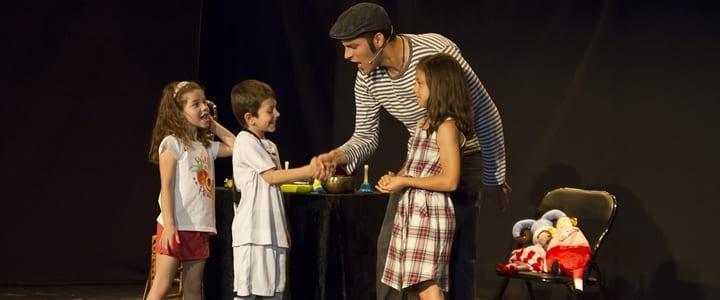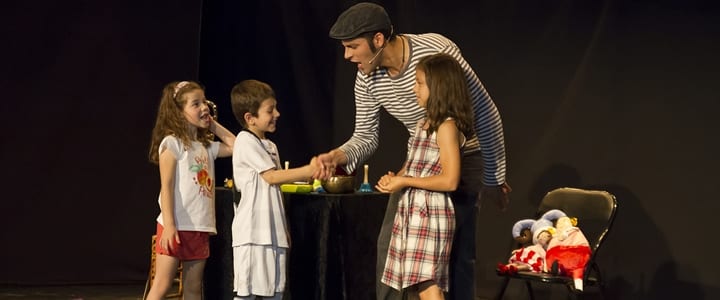Did you know that participating in performing arts can help your child learn a new language? In this article, Mariella Gambardella from eSpectacularKids.com shows you how theater and language-learning go hand in hand…
When I moved to Spain with my family, neither my husband nor I spoke a word of Spanish. Our one-year-old daughter had not been exposed to the language yet either. Having lived in a few countries before, though, we were very aware of the importance of learning the local language as quickly as possible in order to fully integrate ourselves.
We wanted our child to be able to play with other children at the park and go to a Spanish-speaking nursery school. Besides our reasons, there are many other reasons why you should raise your child bilingual.
Our family had been fond of theater for a while, so we decided to use theater as a tool for our daughter to learn Spanish.
How Theater Helps Kids Learn a New Language
A lot has been written about the benefits of performing arts for children’s learning. Performing arts lets your child have fun while learning moral values, improving communication and social skills, and expanding their general knowledge.
You may ask, however, what is the role that performing arts play in learning languages? Below are some reasons you should use theater for your child’s second (or third) language acquisition:
1) Children need extra motivation to learn languages. A magic show, theater, or any other type of gestural activity provides participation, excitement, and surprises. These fun and relaxed environments are ideal for children to absorb and learn a new language. It allows them to internalize phrases and vocabulary without even realizing it!
2) Theater helps children learn not only the most “formal” parts of the language, but also idioms, vocabulary, intonation, and structures that don’t always appear in books. The language is typically used in a conversational manner.
3) When the actors are native speakers, children hear different types of accents and lesser-known expressions. The native speakers bring their own flair to the table and introduce listeners to different linguistic stylings.
4) Although actors are at the center of the performance, often children have the opportunity to perform in or engage in other ways with the production. Whether at a theater, at home, or in a classroom, playing, improvising, and role-playing are the most effective ways of acquiring a language, as they improve children’s communication skills.
In fact, role-play in particular is one of the most widely used techniques in classrooms to teach and learn languages. This activity allows children to become anyone for a short period of time and express themselves in a more forthright way.
5) The good thing about watching performing arts in other languages is that we can choose the theme. If it’s a theme that children enjoy, they’ll be more willing to listen and learn.
6) The availability of a variety of topics also allows us as parents and teachers to select performances that are suited to a particular vocabulary lesson.
7) The fact that the plays and performances usually represent everyday situations allows children to learn vocabulary and expressions that are used in everyday life. It’ll definitely have a lot of practical use if you’re raising bilingual kids.
The ultimate goal is making the language heard as something normal. The learning should be concealed within fun and entertainment so that children have the opportunity to learn in a dynamic and interactive environment.
Looking for additional help from a Spanish or other language tutor? Search for a tutor near you!
Mariella is co-founder of eSpectacularKids.com, the first online video library of storytelling, theater, magic, and puppet shows in English and Spanish for children 2-12 years old. The online platform makes performing arts accessible to all families and schools — anytime, anywhere, and from any type of mobile device.
Suzy S.


